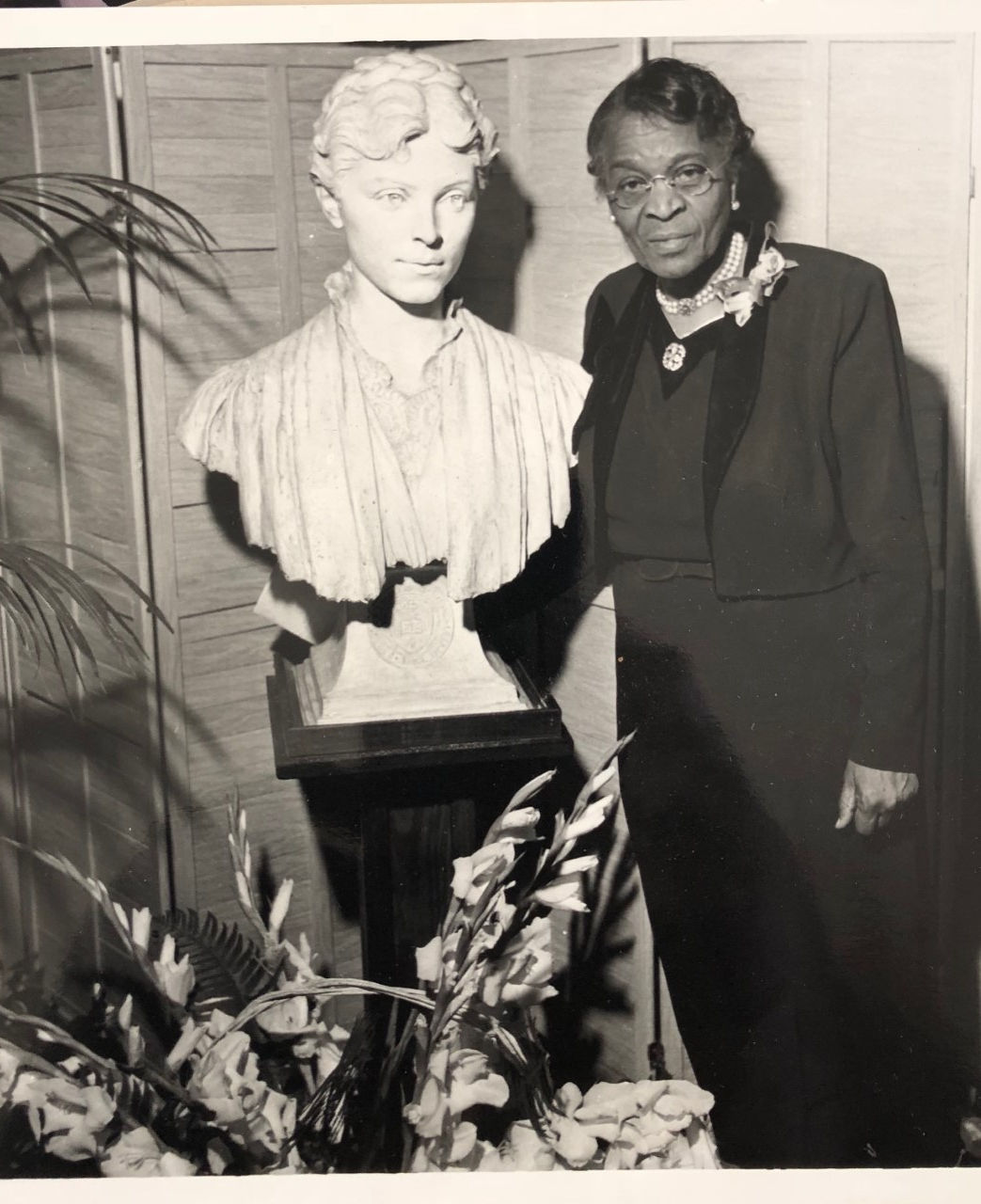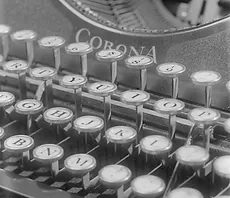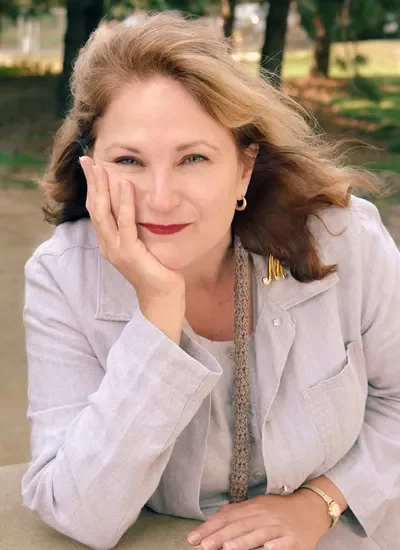Photo by North Carolina Central University/Historically Black Colleges & Universities (HBCUs)/Getty Images
This black and white photo is from the camera of the African American photojournalist, North Carolina native, and civil rights activist Alexander McAllister Rivera, Jr. (1913-2008). The image is packed with meaning that no caption accompanying it has yet conveyed.
It was taken sometime in 1952 in Alice Freeman Palmer Memorial Hall on the campus of the Alice Freeman Palmer Memorial Institute (AFPMI) in Sedalia, North Carolina. We see two American educators, Charlotte Hawkins Brown (1883-1961) and Alice Freeman Palmer (1855-1902). Brown, of African descent, is wearing a dark dress with white pearls, a corsage, and earrings. She stands near a rather bright white, over-life-size bust of Palmer, who had been her mentor and patron. Both women are meticulously attired, and both were devoted to the cause of education.
As a young child, Brown moved from her birthplace in Henderson, North Carolina with her mother to Cambridge, Massachusetts where she enrolled at Cambridge English High and Latin School. Palmer, who was then living in Cambridge, had been president of Wellesley College from 1881 to 1887 before her marriage to Harvard professor George Herbert Palmer in 1887.
In an episode that is well-nigh legendary, Palmer had observed Brown while Brown was working as a babysitter, pushing a stroller with one hand and holding a volume of the Latin poet, Virgil, in the other.
As one of the first women admitted to the University of Michigan, Palmer thought that a college education was “life insurance for a girl,” and saw a kindred spirit in Brown’s desire to study. Palmer committed to support Brown’s work at Salem State Normal School where Brown trained to become a teacher.

In October 1901, Brown was persuaded to return to North Carolina to run a struggling school called Bethany Institute in Sedalia that its sponsor, the American Missionary Association, would soon close. Determined to start a new school there,Brown returned to Massachusetts, and drawing upon her friendship with Alice Freeman Palmer, she began soliciting funds from prominent New Englanders. The Alice Freeman Palmer Institute opened its doors in October 1903 a few months after Palmer died.
In interracial sisterhood, other African American women educators were assisted in a similar way by white women philanthropists. In Augusta, Georgia, for example, Lucy Craft Laney was helped by Francine E. Wilder Haines from the Home Missions of the Presbyterian Church to open the Haines Institute, which operated from 1886-1949.
After Laura Spelman Rockefeller gave support to Harriet E. Giles and Sophie B. Packard’s Atlanta Baptist Female Seminary, the school was renamed in honor of Mrs. Rockefeller’s father, abolitionist Harvey Buel Spelman. Spelman College is today the oldest private liberal arts college for Black women in the U.S.
Although this photo has been dated to 1955 by one source, it seems much more likely that the correct year is 1952. That year marked two important events at the AFPMI: the 50th anniversary of the AFPMI and Brown’s retirement after having served continuously as principal and teacher for exactly fifty years in October of 1952.
Her students had come from near and far to attend one of the only schools in North Carolina to offer a college preparatory program based upon a liberal arts curriculum. The AFPMI had benefitted the lives of its nearly 1,000 graduates, and it was still offering classes in Latin in the late 1960s under a teacher named “Mr. Colley.”

The bust itself is the work of the sculptor Evelyn Beatrice Longman (1874-1954), a brilliant protégée of Daniel Chester Smith, who had designed the statue of Lincoln in the Lincoln Memorial in Washington, D.C. The bust had likely been brought to Sedalia for display in the Alice Freeman Palmer Memorial Building when the structure was completed in 1922. The building was the heart of the campus with its chapel, auditorium, library, administrative offices, and classrooms. The bust was likely destroyed on February 14, 1971, in a devastating fire that foreshadowed the school’s closure six months later.
Each one of the people involved in this photograph—the two educators, the photographer, and the sculptor—came from humble backgrounds and rose through various vicissitudes on their own talent. It is a portrait of American art, American ingenuity, and American success. It is also a visual representation of a successful Black and white alliance that was able to bring significant and lasting educational opportunity to North Carolina in the era of Jim Crow.

Learn more:
Charles Weldon Wadlington and Richard F. Knapp, Charlotte Hawkins Brown & Palmer Institute: What One Young African American Woman Could Do, (Chapel Hill: University of North Carolina, 1999).
Dana Pilson, “Write it Large on the Wall: The Sculptors Evelyn Beatrice Longman and Daniel Chester French,” Fine Art Connoisseur 18 (May-June, 2021): 104-109.
“History Lunch Break: Dr. Charlotte Hawkins Brown & Her Legacies” https://www.youtube.com/watch?v=pTkePbS-TNk
“Renowned Photojournalist Alex Rivera Dies at 95,”
https://nccueaglepride.com/news/2008/10/24/102408aab_575
Michele Valerie Ronnick, “Classical Education and the Advancement of African American Women from the Nineteenth to the Twentieth Century,” in Unsealing the Fountain: Pioneering Female Classical Scholars from the Renaissance to the Twentieth Century, Classical Presences Series, (eds.) Rosie Wyles and Edith Hall (Oxford: Oxford University Press, 2016), pp. 176-193.





